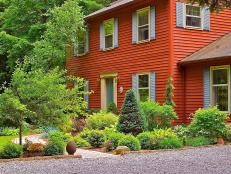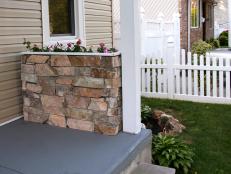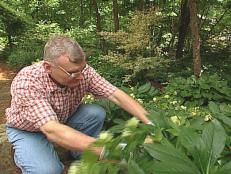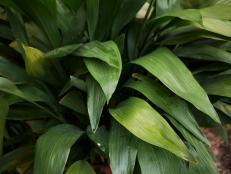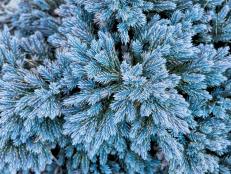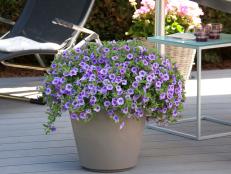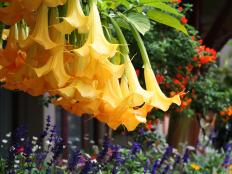How to Plant Evergreens in Containers
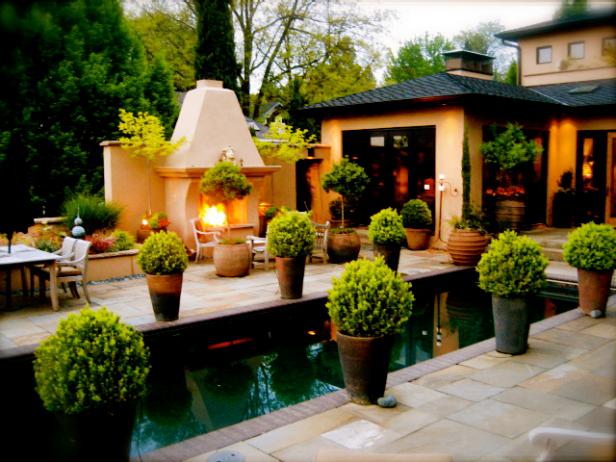
Design by RMS user Allende
Master gardener Paul James shares some of his favorite evergreen choices for unique potted plantings.
How to Choose Evergreens
"In late summer, millions of Americans flock to their local nurseries or home improvement centers to buy mums, pansies, asters, ornamental kale and a number of other plants to provide a final blast of fall color before the arrival of winter," Paul says. "And that's great, but once really hard freezes arrive, those plants either lose their luster, or bite the dust." It's still worth the effort to create such seasonal color, he says, but also consider a few plants that last throughout the winter in most parts of the country and look great just about anywhere you put them, especially in pots.
Nearly all evergreens grow great in containers, including those that can get quite large. But thankfully, most evergreens grow so slowly that they can remain in their containers for years. And for those evergreens that ultimately outgrow their containers, you can either repot them in a larger container or plant them in the ground.
Boxwoods make great container plants. There are essentially only two species available — the European boxwood and the Japanese boxwood. But there are dozens of cultivars of both species, both of which are fairly easy to grow and are hardy to Zone 5. While the boxwood isn't a plant that Paul would ordinarily use in the landscape, he highly recommends the look for containers.
'Hicks' yew (Taxus x media, 'Hicksii') is an upright, shade-tolerant shrub that like the boxwood has both European and Japanese roots. According to Paul, it's easy to find in most nurseries and fairly easy to grow, providing it doesn't receive too much afternoon sun, especially in the South. It's hardy to Zone 4. Note: 'Hicks' yew can actually get pretty tall — 20 to 30 feet — but in a container it isn't likely to grow too quickly. You should be able to enjoy the plant for a few years before you have to either pot it up or give it a permanent spot in the landscape.
For a totally unique plant look, try adding a holly known as 'Sky Pencil' (Ilex crenata) to your garden space.
"What's so cool about this plant is that it will grow to about 4 feet tall," Paul says, "but it will never get any wider than what you see here, which is an unusual but exciting trait among plants, and one that's not all that easy to find." 'Sky Pencil' looks equally good in the ground or in a pot, where it can remain for several years.
Another unusual upright plant is the juniper called 'Skyrocket' (Juniperus scopulorum). This sun lover is hardy to Zone 4, maintains beautiful silvery-blue foliage year-round and grows to 15 feet tall and just two feet wide.
"While 'Skyrocket' is most often used in formal landscapes, I think it blends well in just about any setting," he says. "It also makes a great specimen because its shape resembles that of an exclamation point."
At the other extreme is this ground-hugging juniper known as 'Greenmound' or Juniperus procumbens 'Greenmound.' It grows to 8 inches tall and gradually spreads to about 6 feet wide. 'Greenmound' is most often used as a groundcover, and it's great for controlling erosion along hillsides, but it can also be trained as a bonsai. "This Zone 4 cutie can take full sun, and it's also a slow grower," Paul says, "so I'll probably keep it in this pot for at least three or four years, pruning it a bit along the way."
The last container evergreen happens to be one of James' favorites. 'Bosnian Pine,' or Pinus leucodermis, is hardy to Zone 4 and features dark green needles that are densely packed; in time there will be attractive purplish-bluish cones. Like 'Greenmound,' it's also a slow grower, so it can stay in a pot for a long time as well as handle full sun.
How to Plant Evergreens in Containers
Select a pot that is proportionate in size with the plant, and fill it partway with a top-quality potting mix — one that has a fairly coarse texture and drains well.
Place the plant in the pot and add more soil around the base of the plant, tamping the soil down as you go.
Give the plant a thorough soaking.
How to Care for Evergreens in the Winter
To maintain your potted evergreens, especially during the winter months, make sure to water on a regular basis, using cold water from an indoor faucet if necessary. Whatever you do, don't let your evergreens dry out for extended periods in the winter. Although their growth may slow to a snail's pace, evergreens don't go completely dormant in winter, and as a result, they need moisture.
If you live in an area where really hard freezes are the norm, then you might want to give the root ball additional protection such as piling leaves or mulch around the container or wrapping it in several layers of bubble wrap so that the plant doesn't freeze.
"The evergreens I've showed are just the tip of the iceberg," Paul says. "So try a few on the patio this winter, and I think you'll find a little bit of green in the middle of the winter is a welcome sight indeed."








